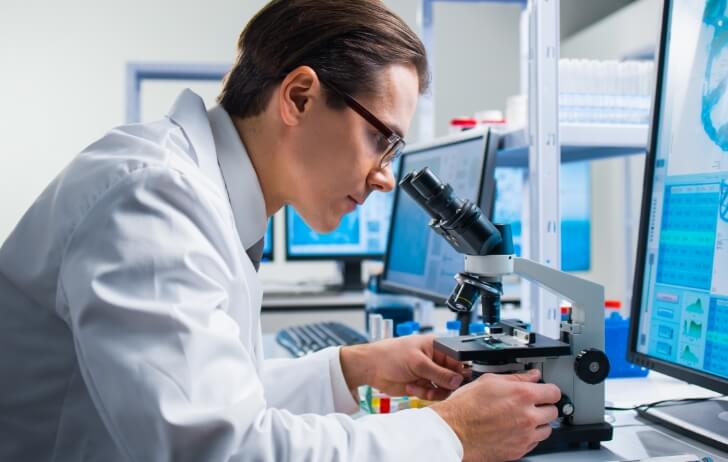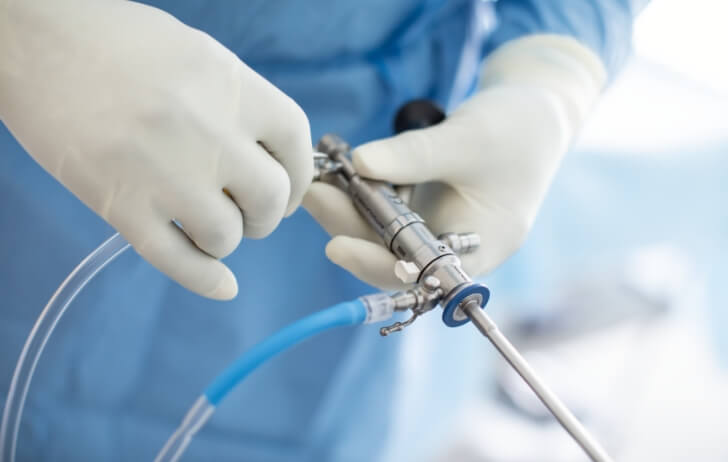If your doctor has told you that you have uterine fibroids, you may feel a bit overwhelmed. It’s a perfectly normal reaction. But the more you learn about fibroids, the more confident you’ll feel about your next steps.
First, make sure you know what you’re dealing with. What causes fibroids? How common are they? For a great overview, read our “Fibroids 101” blog. It covers all the basic questions you may have…but probably didn’t ask your doctor.
OK. So now you know what fibroids are. But what do you do about them? Do you have to remove them? The short answer is: it depends. Let’s go back a few steps…

How were your fibroids discovered?
For some of you, your fibroid diagnosis may be shocking, especially if you haven’t had any noticeable symptoms. Your doctor may have discovered fibroids during your routine pelvic exam or even during your prenatal ultrasound.1 That’s actually more common than you may think. Many women have fibroids sometime during their lives, but they may not know it because fibroids often cause no symptoms.
On the other hand, your fibroid diagnosis may not be a complete surprise. You may have suspected something was going on based on symptoms like heavy and painful periods, bloating, and frequent urination—and you could also be suffering from lower back pain and pain during sex.2 Nobody wants fibroids, but you may feel relieved to discover there is a reason for these things you’ve been feeling.

Should your fibroids be removed?
Where you fall into the experiences outlined above can help determine if your fibroids should be treated. Of course, your doctor will help you decide what’s best for you.
If you aren’t experiencing symptoms, or if your symptoms are very mild and not getting in the way of your everyday life, treatment may not be necessary now. Your doctor may mention the term “watchful waiting.”3 That means your doctor would continue to meet with you for regular appointments, talk to you about how you’re feeling, and monitor your fibroids. If symptoms begin or worsen, that could help determine if future action is needed.
We know what you’re thinking—it’s weird to just let fibroids…hang out in your uterus. But if fibroids aren’t causing problems, there’s generally little reason to worry about leaving them alone. Most fibroids aren’t cancerous and rarely interfere with pregnancy.3 They usually grow slowly (or not at all) and often shrink after menopause, when levels of reproductive hormones drop.3
However, if you’re having bothersome symptoms from your fibroids, your doctor may suggest treatment.

Are there options when it comes to fibroid treatment?
You may be nervous and thinking that getting rid of troublesome fibroid symptoms means removing your uterus. However, things have changed a lot since the days when a hysterectomy was the only option. Now there are far less invasive options that include non-surgical methods like birth control pills or IUD as well as minimally invasive surgeries.
For example, the Acessa® procedure is laparoscopic radiofrequency ablation, or Lap-RFA. It works by delivering heat (radiofrequency) directly into a fibroid, which makes the fibroid shrink. It doesn’t technically remove the fibroids—it treats the fibroids and reduces or stops their symptoms—which is really the end goal.
Another option is MyoSure® tissue removal. It is a hysteroscopic procedure, which means the doctor uses a special tool to view the inside of the uterus. The doctor can see the fibroids and remove them without cutting the uterus.
The bottom line
There is no clear-cut answer regarding whether fibroids need to be removed. That decision should be based on how your fibroids are making you feel and how they’re affecting your life. The good news is that, if the time comes to deal with your fibroids, you have options and can talk with your doctor to choose what’s best for you.

Take this short quiz to better understand the symptoms you might be having and then share the results with your doctor.
REFERENCES: 1. Mayo Clinic. Uterine fibroids: symptoms & causes. https://www.mayoclinic.org/diseases-conditions/uterine-fibroids/symptoms-causes/syc-20354288. Accessed October 27, 2022. 2. U.S. Department of Health & Human Services Office on Women’s Health. Uterine fibroids. https://www.womenshealth.gov/a-z-topics/uterine-fibroids. Accessed October 27, 2022. 3. Mayo Clinic. Uterine fibroids: diagnosis & treatment. https://www.mayoclinic.org/diseases-conditions/uterine-fibroids/diagnosis-treatment/drc-20354294. Accessed October 27, 2022.
Important Safety Information
Acessa ProVu System
The Acessa ProVu system is intended to identify and shrink symptomatic uterine fibroids. The Acessa ProVu system is used by trained physicians during laparoscopic surgery under general anesthesia. Rare but serious risks of this procedure include, but are not limited to, infection, internal injury, blood loss and complications related to laparoscopic surgery and/or general anesthesia. This procedure is not recommended for women who are planning future pregnancy. This information is not medical advice. Please discuss the risks and benefits with your doctor to find out if the Acessa procedure may be right for you.
MyoSure Tissue Removal System
MyoSure tissue removal system is intended to remove unwanted tissue from the uterus. During a MyoSure procedure, a trained gynecologist inserts the MyoSure device through your vagina and then removes the unwanted tissue from inside the uterus. Use of the MyoSure system is not appropriate for patients who are or may be pregnant, or have signs or symptoms of a pelvic infection, cervical cancer, or previously diagnosed uterine cancer. As with any surgical procedure, there are potential risks including but not limited to internal injury, excessive bleeding, and complications related to anesthesia. Temporary side effects may include cramping, bleeding, fever, and nausea. This information is not medical advice. Please discuss the risks and benefits with your doctor to find out if the MyoSure procedure may be right for you.

